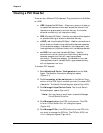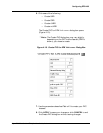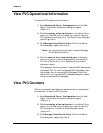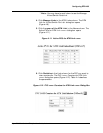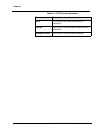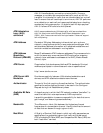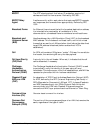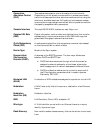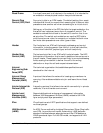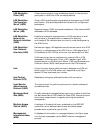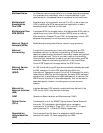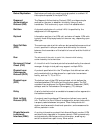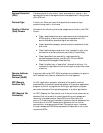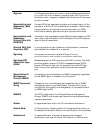
Cajun P550/P880 ATM Uplink User Guide, Version 1.1
G-3
BOOTP The IETF’s boot protocol that lets an IP endstation acquire its I
address and boot file from a server. Defined by RFC 951.
BOOTP Relay
Agent
A software entity within each device that captures BOOTP requests
and responses, and forwards them appropriately. Defined by RFC
1532.
Broadcast Frame An Ethernet frame transmitted with a broadcast destination address;
it is intended to be received by all endstations. In this
documentation, a broadcast frame is considered a multicast frame.
Broadcast and
Unknown Server
(BUS)
Handles data sent by a LAN Emulation Client (LEC) to the broadcast
MAC address. This includes all multicast traffic, and initial unicast
frames that are sent by a LAN emulation client before the data direct
target ATM address is resolved (before a data direct VCC is
established).
Cell An ATM cell consists of 53 bytes or “octets.” Of these, five constitute
the header; the remaining 48 carry the data payload.
Cell Loss Priority
(CLP) Field
A priority bit in the cell header. When set, it indicates that the cell
can be discarded, if necessary.
Challenge-
Handshake
Authentication
Protocol (CHAP)
The Challenge-Handshake Authentication Protocol (CHAP) is used
to periodically verify the identity of the peer using a 3-way
handshake. This is done upon initial link establishment, and MAY be
repeated anytime after the link has been established.
Classical IP and
ARP over ATM
(CLIP)
An adaptation of TCP/IP and its Address Resolution Protocol (ARP)
for ATM, defined by the IETF (Internet Engineering Task Force) in
RFCs (Requests for Comments) 1483 and 1577. It places IP packets
and ARP requests directly into PDUs (Protocol Data Units) and
converts them into ATM cells. Classical IP does not recognize
conventional MAC layer protocols such as Ethernet or Token Ring.
Command Line
Interface (CLI)
Character-based command line interface.
Common Part
Convergence
Sublayer (CPCS)
The portion of the convergence sublayer of an AAL that remains the
same, regardless of the type of traffic.




